
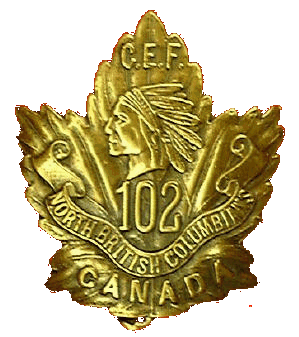

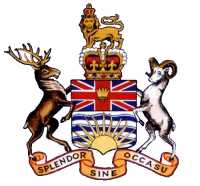



The Story of the 102nd Canadian Infantry Battalion
From BC to Baisieux by Sgt Leonard McLeod Gould HQ 102nd Canadians WW1







The Story of the 102nd Canadian Infantry Battalion
From BC to Baisieux by Sgt Leonard McLeod Gould HQ 102nd Canadians WW1
GEORGE MALCOLM (SNOOZE). George Ireland was born in the Village of Nelson, now Burlington, Ontario February 28, 1888.At the age of 10 his father, John Ireland, died and his mother Catherine decided to sell the 200 acre farm on Dundas Street, just east of the Guelph Line. The farm where George lived is now home to Notre Dame High School and the nineteen acre Ireland Park. They moved to Hamilton where his mother had a house built at 32 Wentworth Street North.Cathedral High School is now on the property. George’s brothers James and William (Will) moved West to Saskatchewan and George stayed behind to take care of his mother.George (Snooze) Ireland was very good at sports and played in the Ontario Hockey Association with the Hamilton Alert Hockey Team.George played on the first artificial ice in Hamilton for Hamilton Alert at a time when there were only seven players to a team. The Hamilton arena opened on January 10, 1913, the game played that day was the first hockey ever played in the arena, before which hockey was played on Burlington Bay at the foot of Ottawa Street. The game saw Hamilton Alerts defeat Welland 8-4 in the Intermediate O.H.A. tilt. George wrote his name into Hamilton sports history that night with 6 other players. There were no substitutions in those days; they were on the ice for the entire time. George excelled at many sports, in the summer he played baseball for a local team called the White Team who did not play in a league but took on all comers any place, any time and usually beat the challenger hands down.
George (Snooze) Ireland, nobody seems to know where the name Snooze came from, I have been told that it is because he was the snap or centre and well known to fall asleep on the ball. Maybe it was because he could grab a nap at any time anywhere, a well known family trait.He played for the Hamilton Alert Junior Team in 1912 when they were Ontario Junior Rugby Football Champions, the same year the Senior Team won the Grey Cup.
He also played for the Hamilton Tigers Senior Team in 1914 and in 1915 when the team won the Grey Cup. He was captain of the 1919 Hamilton Tigers, more about that later.
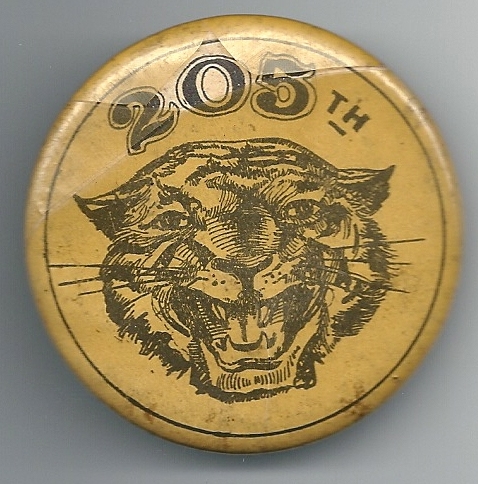 When WW1 broke out George helped to form the 205th
Battalion and signed up March 2nd, 1916.The 205th was known as the
Tiger Battalion because of the many well known Tiger Rugby Football players
and supporters who joined up. There were many athletes in the battalion's 602 soldiers who included
representation from the different H.A.A.A. teams. When WW1 broke out George helped to form the 205th
Battalion and signed up March 2nd, 1916.The 205th was known as the
Tiger Battalion because of the many well known Tiger Rugby Football players
and supporters who joined up. There were many athletes in the battalion's 602 soldiers who included
representation from the different H.A.A.A. teams.
|
.jpg) In February 1917, 250 men of the 205th Battalion (Hamilton
Tigers) were drafted into the ranks of the 164th (Halton
Dufferin) Battalion. This was necessary in order for that Battalion to go
overseas. In February 1917, 250 men of the 205th Battalion (Hamilton
Tigers) were drafted into the ranks of the 164th (Halton
Dufferin) Battalion. This was necessary in order for that Battalion to go
overseas.
|
George Ireland and fellow
205th members. He`s seated on the right in the 3rd
Row.
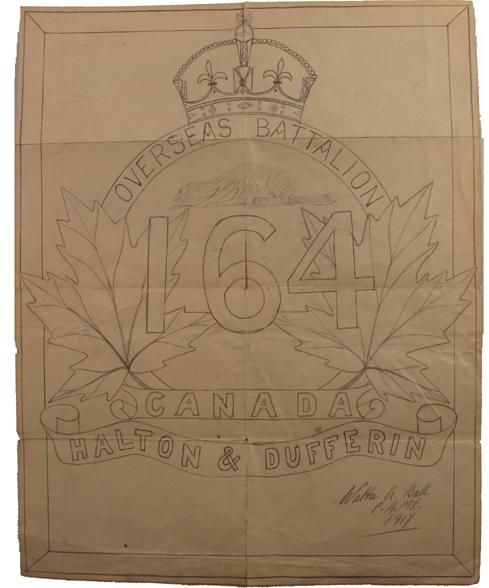 On April 5, 1917, the 164th Battalion left its headquarters
in Hamilton for war. George was part of that draft and on April 11, 1917 the
Battalion sailed from Halifax onboard H. M. Troop Ship Carpathia. The Carpathia
earlier made history by being the first on the scene of the April 12, 1912
Titanic Disaster and picked up the survivors. It is interesting to note that the
164th Battalion supplied drafts to many other Battalions at the front including
the 102nd and 116th. On April 18, 1918 it was completely absorbed by the 8th
Canadian Reserve Battalion.(War Diaries of the 1st World War 164th)
On April 5, 1917, the 164th Battalion left its headquarters
in Hamilton for war. George was part of that draft and on April 11, 1917 the
Battalion sailed from Halifax onboard H. M. Troop Ship Carpathia. The Carpathia
earlier made history by being the first on the scene of the April 12, 1912
Titanic Disaster and picked up the survivors. It is interesting to note that the
164th Battalion supplied drafts to many other Battalions at the front including
the 102nd and 116th. On April 18, 1918 it was completely absorbed by the 8th
Canadian Reserve Battalion.(War Diaries of the 1st World War 164th)
The Carpathia arrived in Liverpool on April 22, 1917 with little incident but a
constant lookout for enemy submarines that plagued the shipping corridor. Most
of the Battalion was sent to Witley Camp, one the Canadian Camps in England.
George was stationed there as a Company Quarter Master Sergeant until August
1917.
At his own request he was transferred to the 102nd Battalion in order to be
sent to France and reverted back to Private. His new Battalion was initially
called The North British Columbians but in August of 1917 became the 102nd
(Central Ontario) Battalion. On Feb 28th, 1918 he shipped out to France to join
up with the Battalion.On March 4th he arrived at the 102nd at the front at
Bois-de-Froissart near Hersin. On April 4th the Battalion moved into the Oppy
Sector to the East of Vimy Ridge.
In notes of the 102nd War Diary on April 10, 1918 we find “A raid carried out by
4 officers and 132 O.R. from “B” Coy., the whole in charge of Major F.J. Gary,
M.C. was successfully undertaken at 5:00 a.m. The intention was to raid the
enemy trenches from B.12. C. 2.1. to B.11. b 5.5. for the purpose of obtaining
identifications, inflicting casualties and demoralizing the enemy.The raid was
successful; 50 casualties at least, which included certainly 28 killed, were
inflicted; 10 prisoners were brought back belonging to the 102nd Saxon I.R.
Reg’t.Our own casualties were only 12 all told. Lieut. E. McCrea and 4 O.R. were
stretcher-cases, 7 O.R. were walking wounded. In view of the great depth of No
Man’s Land, which in this locality is 1300 yds, the success of the raid is all
the more creditable to the parties concerned. The 87th Bn. who raided at the
same hour on our left, were unsuccessful in taking any prisoners. Casualties:2
officers & 11 O.R. wounded.”George was one of those wounded having been struck
by shrapnel in his arm and leg.
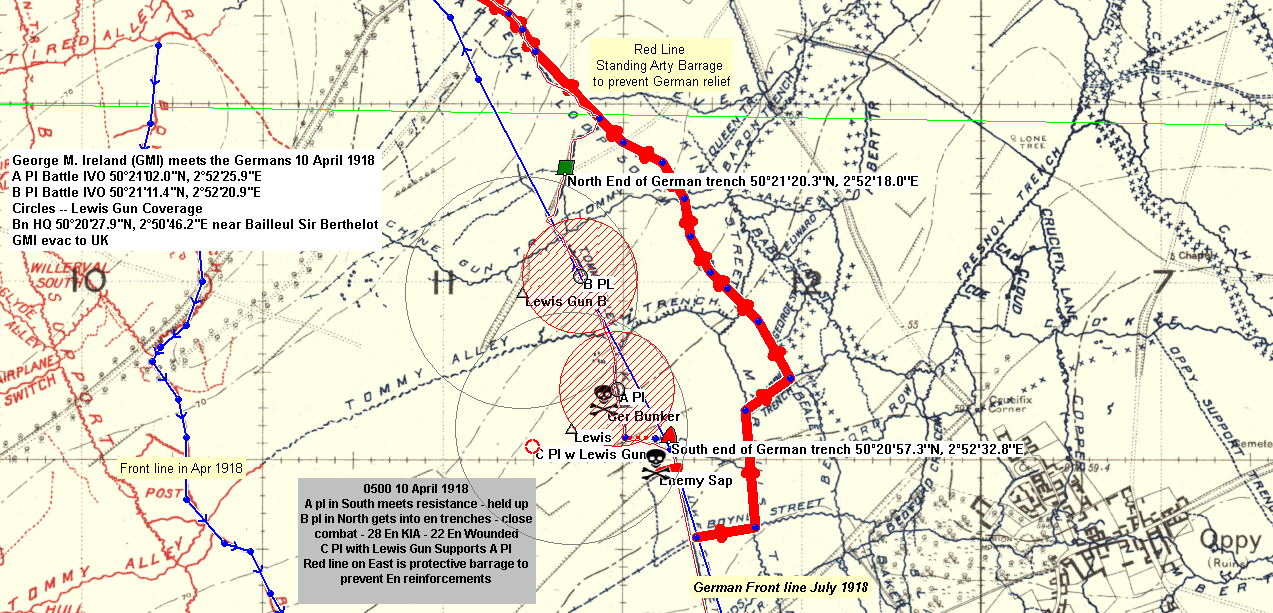
A report was sent to Brigade which was an account of the raid on April 10th where George was wounded. “The Raiding party assembled according to Operation Order.On account of the great depth of “No-Man’s Land” , which is approximately, 1300 yards, our parties had some difficulty in locating entrance in wire, which had previously located by our patrols and scouts. Right party was held up from entering trench by wire; one party started cutting through the wire, and platoon came to grips with the enemy, but passage in wire was small and only a small number succeeded in getting through, inflicting casualties on the enemy, but had to withdraw without prisoners on account of the time for withdrawal having expired. Casualties in this party: Lieut. McCrea – wounded (Stretcher Case). Platoon Sgt. wounded in four places. Two stretcher cases and two walking cases. Left party (which was left of Tommy Alley) entered trench, encountered enemy, and considerable close fighting took place, and about 40 enemy escaped overland.Some of these were overpowered and captured; others who fought were killed. More, who were out of fighting range, were dealt with by our machine guns and rifles. Men were found in funk holes who offered resistance and were dealt with. One enemy who was tangled in wire was released and then fought and so had to be dealt with. One Officer who came up and fired a revolver as party was withdrawing was killed.Our casualties: 1 Officer, -wounded (Stretcher Case): 4 Other Ranks, - (Stretcher Cases): 7 Other Ranks (Walking Cases – slight). All casualties were brought back and all our party returned. 10 prisoners were captured. Estimated casualties inflicted on enemy by whole raiding party, over 50, 28 of whom are known to be killed.”
The Brigade Commander congratulated the raiding party O.C.
Banjo, the code name for “B” Company. He went on to say, “The success of our
raid was due to organization and the splendid determination of our men TO DO
THEIR JOB”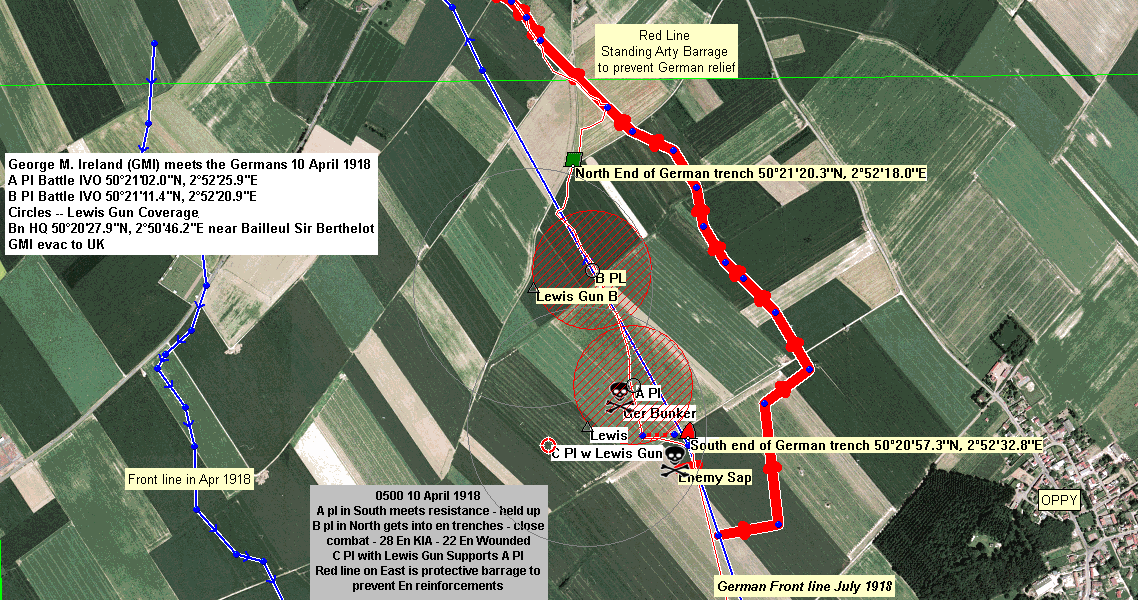
| George was returned from the front on the Hospital Ship HS Essequibo with wounds to his right arm and left leg by shrapnel, which was removed at No. 4 Canadian Gen. Hospital Basingstoke. He was then transferred to Granville Hospital in Buxton and then to Camp Witley, he spent several months in hospital and in recovery. The shrapnel taken from his leg was kept as a souvenir and is part of a shadow box made to his honour by his grandchildren. |
| Originally scheduled to be moved to C.C.C Kinmel Park from Camp Witley on March 5, 1919 troops were held up as a result of a mutiny at RHYL Kinmel and did not get posted to MD#3 Wing RHYL till March 12, 1919 pending return to Canada. On March 23rd 1919 George arrived on board the military transport ship Empress of Britain at Liverpool which was headed to Canada and home. George Malcolm (Snooze) Ireland was discharged at Hamilton April 1, 1919 |
|
Upon his return home he was successful at fielding a Rugby Football Team as Captain of the 1919 Hamilton Tigers of the Ontario Rugby Football Union (ORFU). During WW 1 ORFU play was suspended and there was not a Grey Cup game from 1916 till 1920. After the war, a monument with the 25 names of Hamilton athletes who did not return from the war alive was unveiled at the H Triple A Grounds, (HAAA). The Tigers would hold a religious service at the monument at the beginning of every season. The Prince of Wales honoured surviving Hamilton veterans with medals at the grounds on October 18, 1919.
In October 1919 George married Irene Wade and they raised a family at the house his mother had built at 32 Wentworth Street North in Hamilton. Together they had 5 children, all excellent in various fields of sports and very patriotic. Several of Snooze’s grandchildren and great grandchildren are excellent at sports but none to this date have excelled as much as his grandson Patrick Quinn who played and coached hockey in the N.H.L. Pat lived with Grandpa George and Grandma Irene on Wentworth Street. During his junior hockey days in Hamilton Pat played in the same arena that George had played the first game of hockey so many years earlier and at the indoor arena in Hamilton which was at Wentworth and Barton Streets. He could easily walk from 32 Wentworth St. N. to the “Barn” on Barton. |
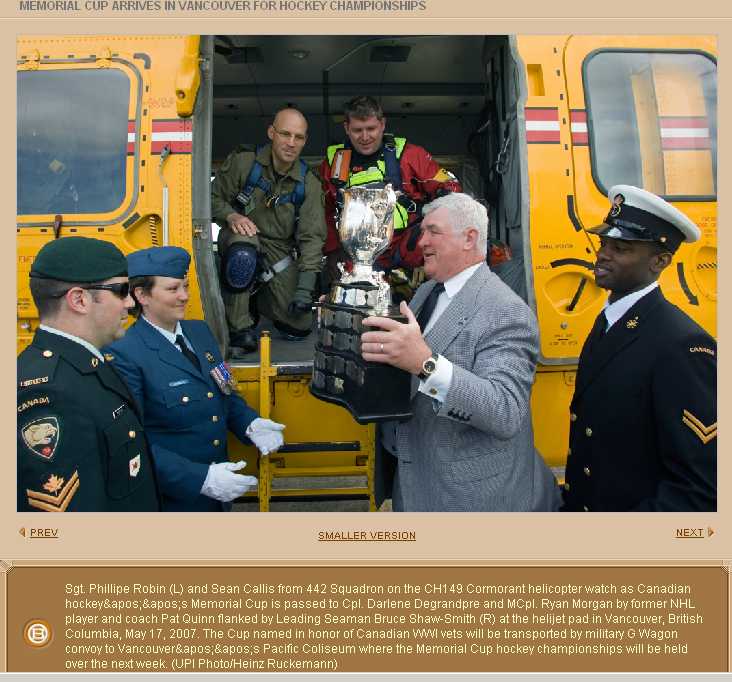 |
|
An obit written by Hamilton Spectator Sports Writer Ivan Miller following his death on October 26, 1964 said this about George.
|
| “Few football fans of today will have knowledge of the Hamilton Alerts, the old Maroon and Grey that contributed to the city’s football glory.Memories of the other years were recalled again Monday with the announcement of the death of George M. “Snooze” Ireland.From 1905, “Snooze” battled for the Alerts, a city league team that came out of the old East End YMCA, at the corner of Barton Street and Westinghouse Avenue. In 1906, when the Alerts won the city intermediate grid championship, through 1907 and 1908, when they captured the city league title, and in 1910 when the junior Canadian championship fell to them, “Snoozer” was enjoying life with some of the greatest. These teams were forerunners of the great Alerts’ senior team that came along in 1911 and the following year startled all and the sundry, including Tigers and Argonauts, by winning the Grey Cup. From early days with the club “Snooze” had many of the best including Red Flannery and many others. George switched to Tigers, as did quite a few other old Alerts, when they all couldn’t quite make the big club in 1912. In intermediate and senior company with the Bengals, the gang carried on until the First World War called. As a Tiger (Hamilton Tigers, now the Hamilton Tiger Cats) Ireland and other Alerts’ grads got to know and play with most of the gridiron greats of the day and they had their fun at Woodlands Park, the East End “Y” front yard, the old HAAA field, the old Rosedale Field in Toronto, Lansdowne Park with one stand, the old Molson Stadium at Montreal, before the days of the modern stand and the big crowds. On the way through, “Snooze” Ireland managed to work up lasting friendships with everyone from humble workers to bank presidents. The National Steel Car War Veterans’ Association knew him well.His friends were legion and lasting and it was a delight, to reminisce with the veteran the other day.A familiar figure for years at the Leander Club’s Old Boys” annual nights, he was thrilled only a short time ago with the reunion of himself, Norm Clark and the veteran trainer, “Doc” Heddle, not to mention “Pinky” Lewis, with whom affection through many years was entirely mutual.” |
|
|
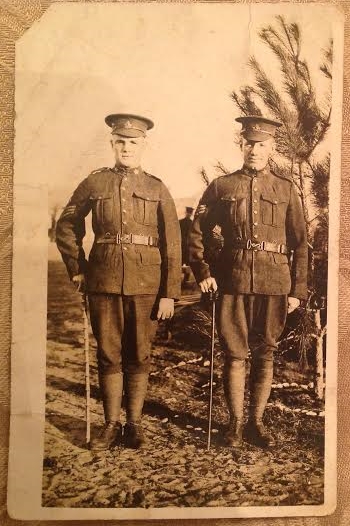 |
George Ireland and Robert Kirkpatrick Staff Sergeant's 205th Battalion, the
Hamilton Tiger Battalion also known as the Sportsman's Battalion.
Barry Quinn
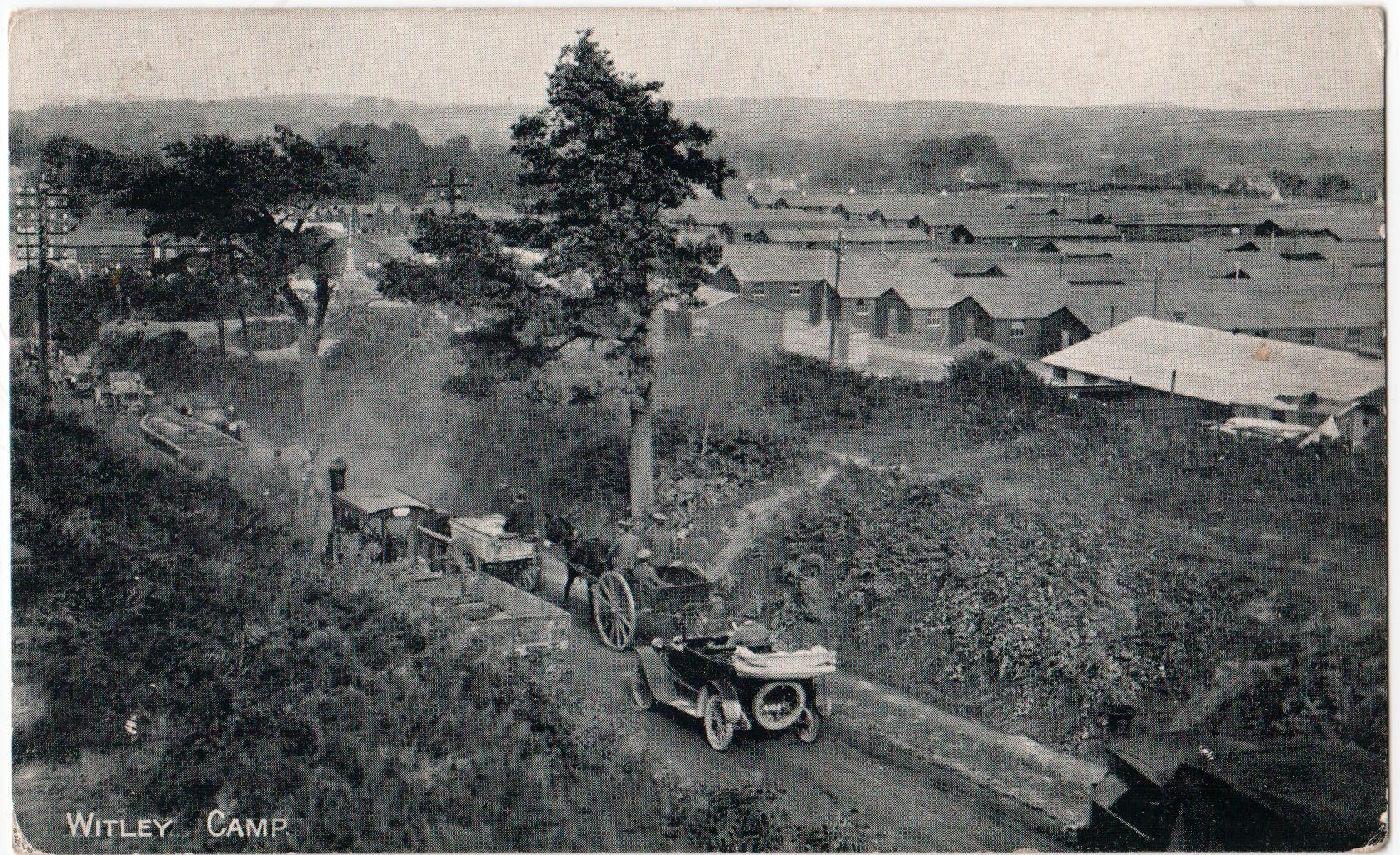 Witley
Camp Witley
Camp |
|
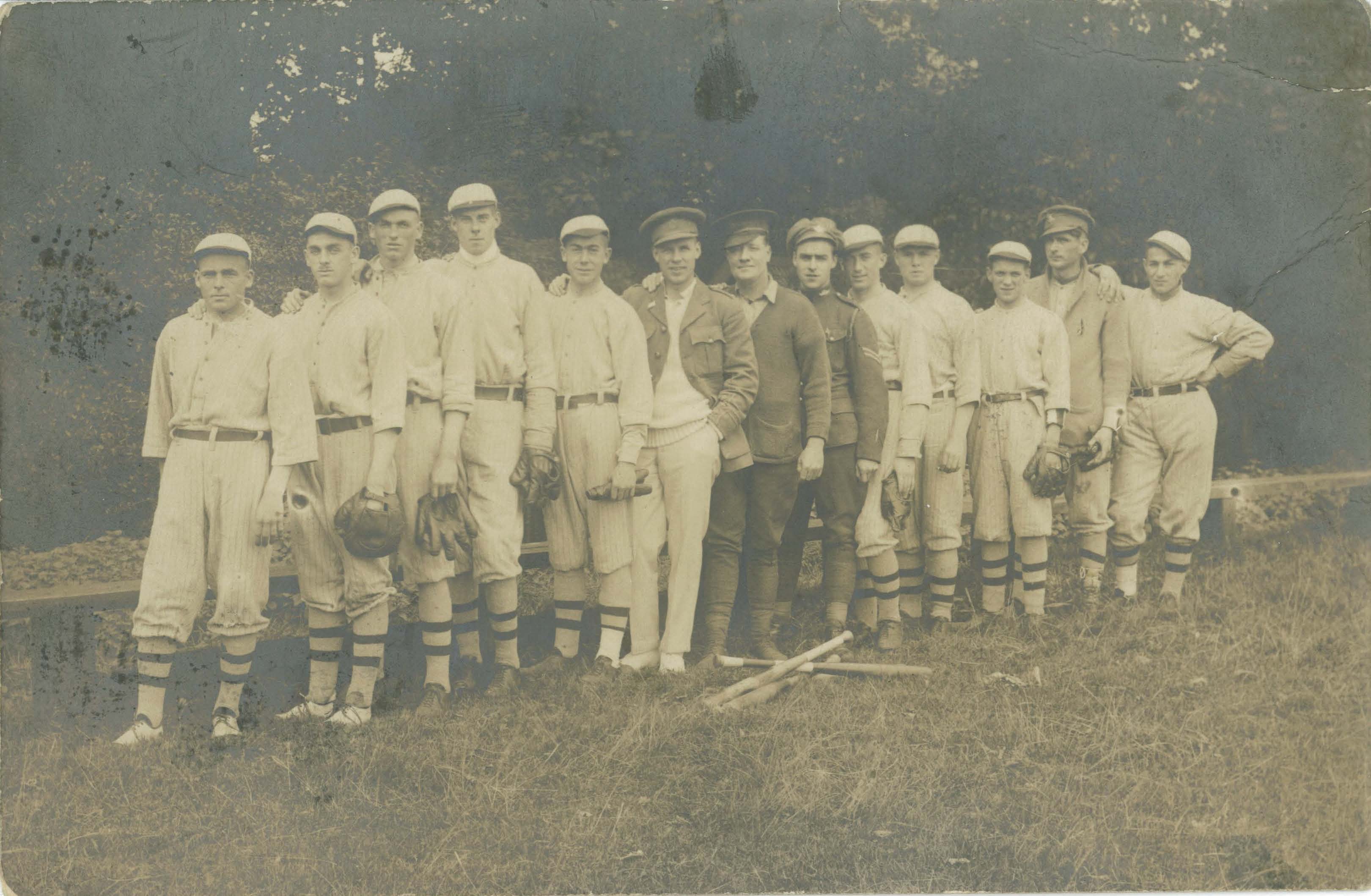 Snooze 4 fm right |
|
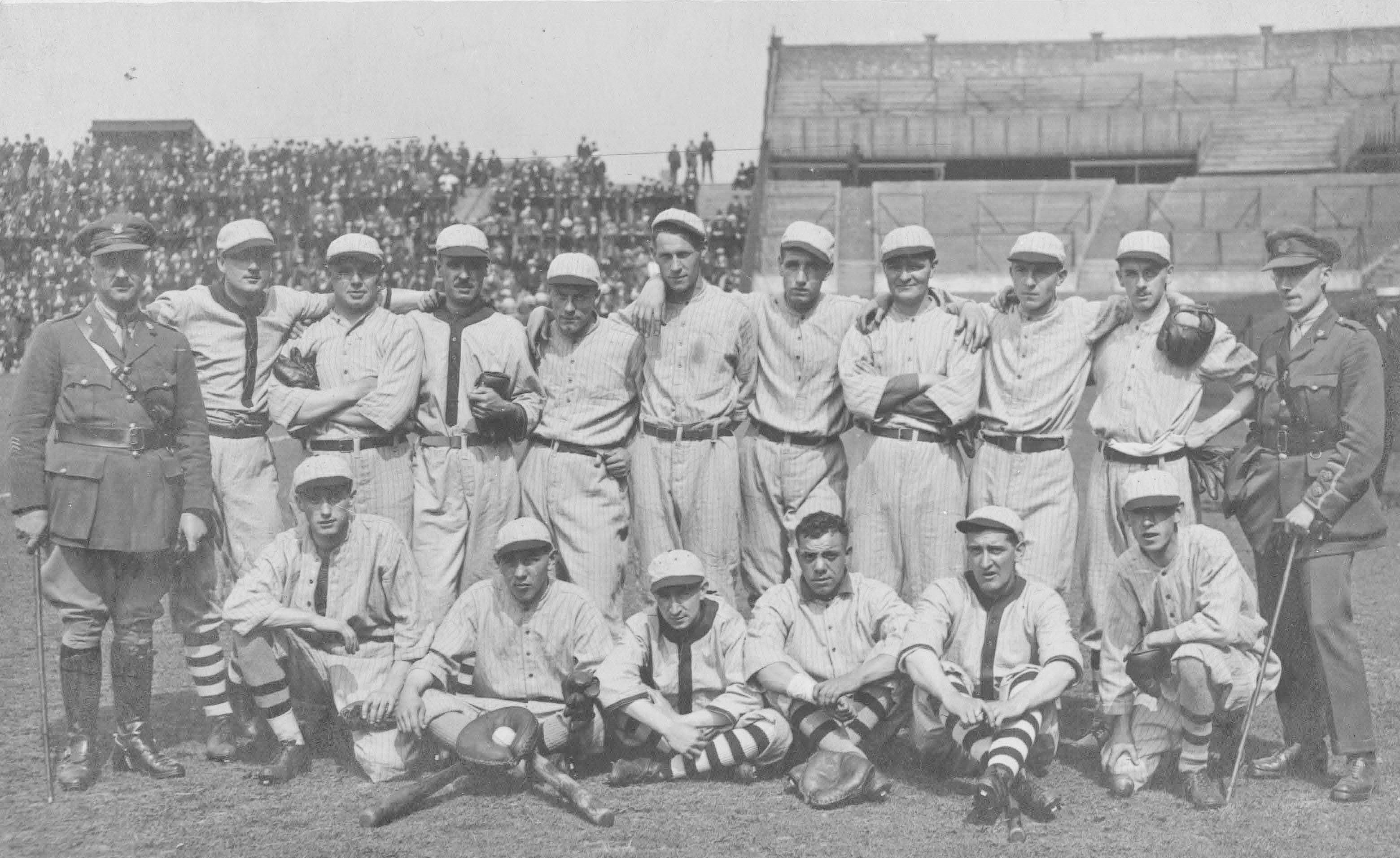 Snooze 2nd fm left top |
|
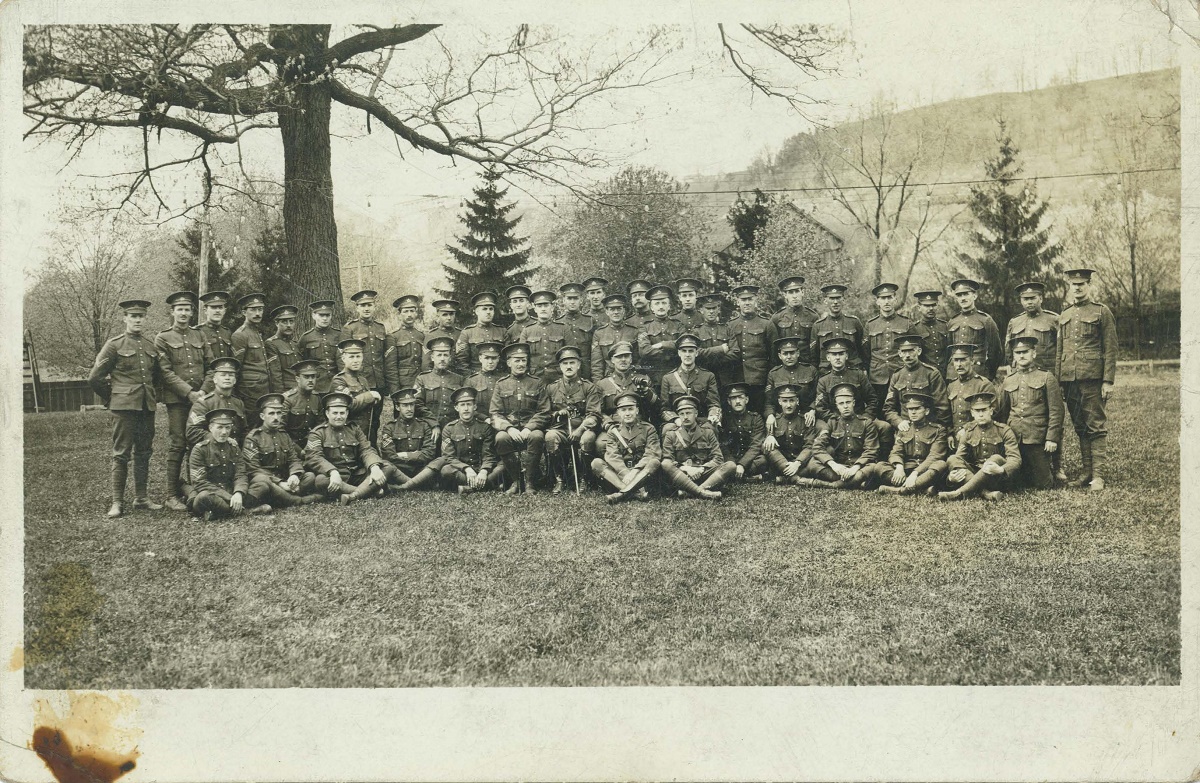 205th Battalion at training camp Bordon.jpg |
|
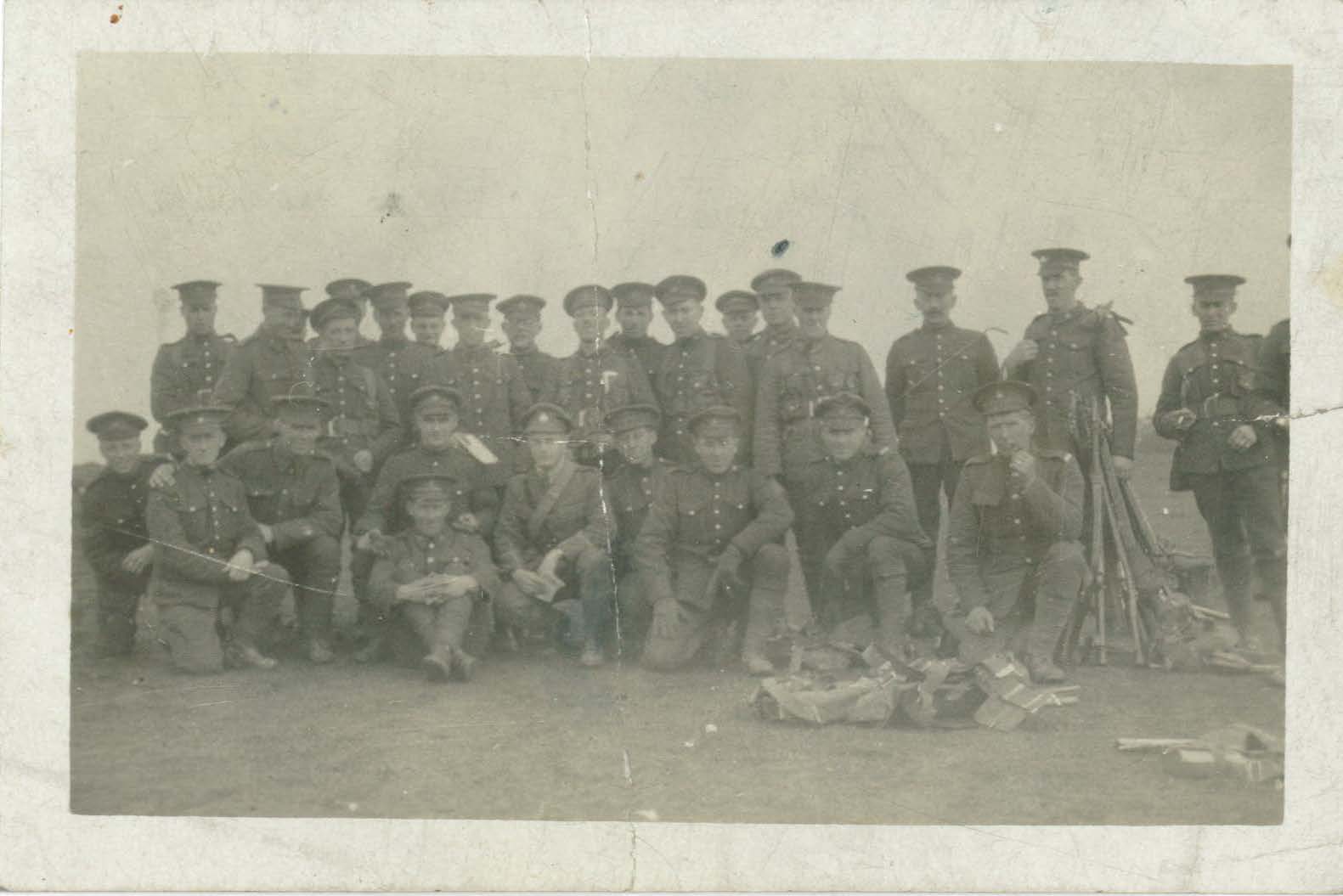 With the 102nd Bn - Snooze is top left |
|
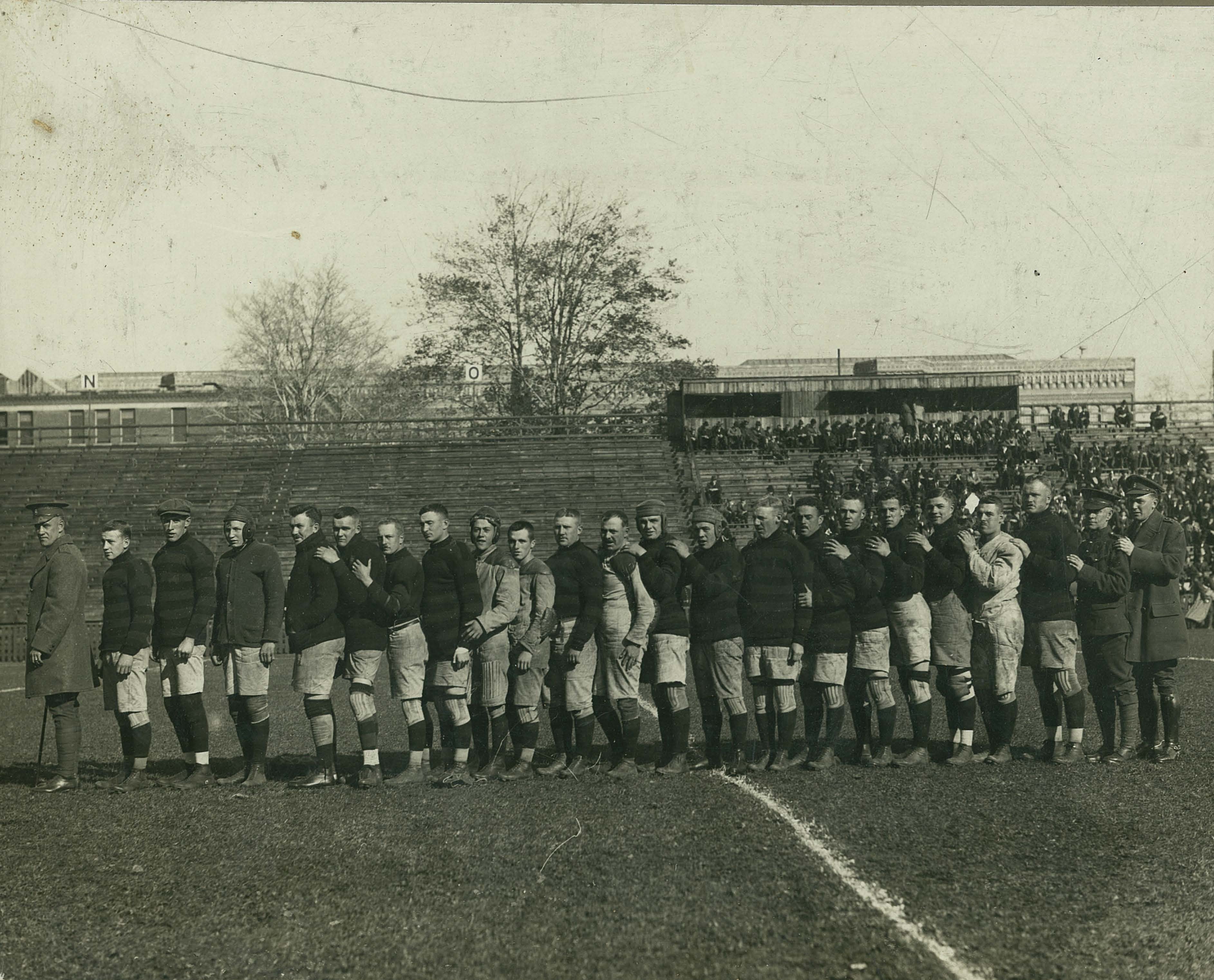 205th Tigers Rugby Football Team 2016 Snooze 13 from left 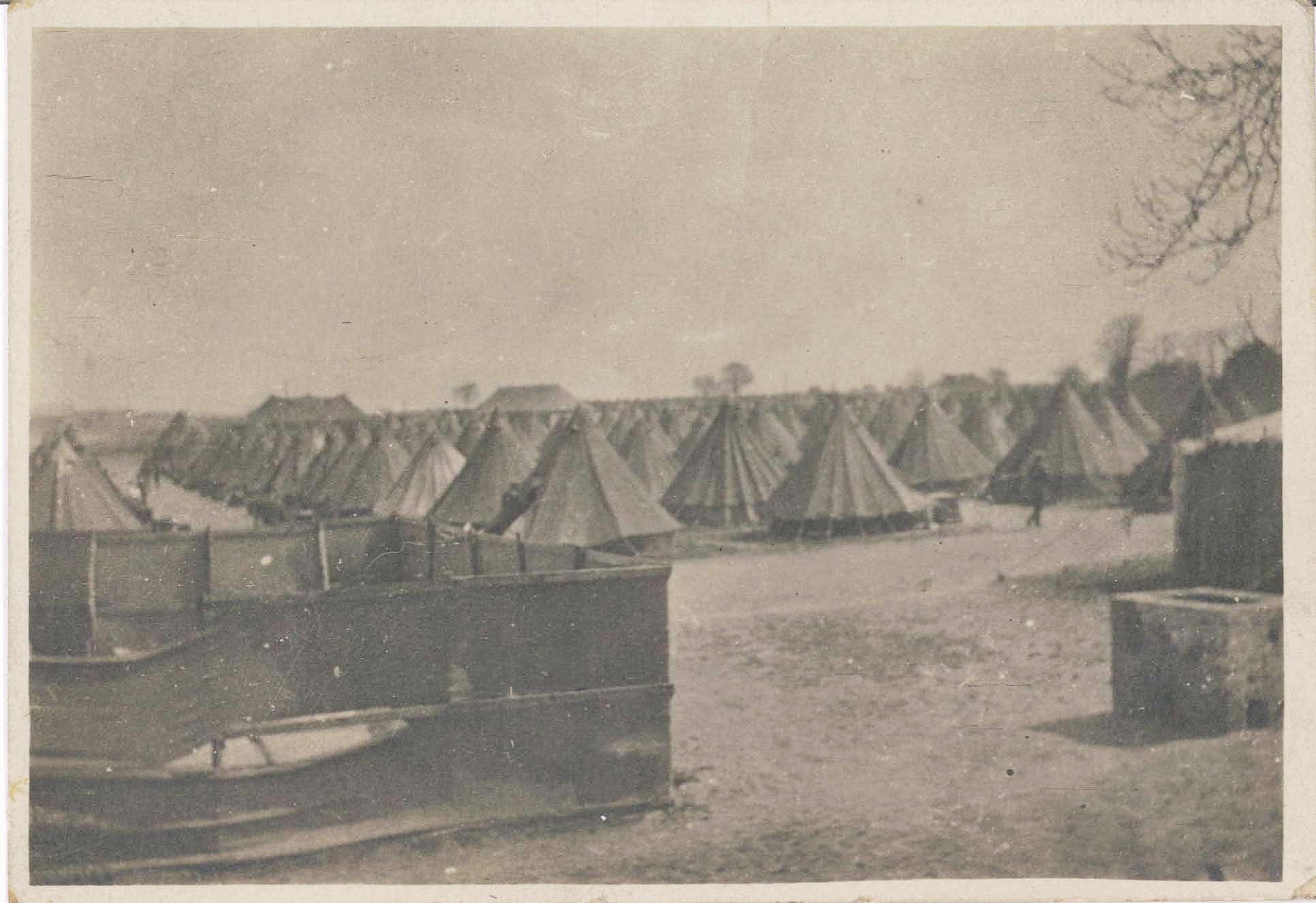 |
|
| Believe at Camp Bordon | |
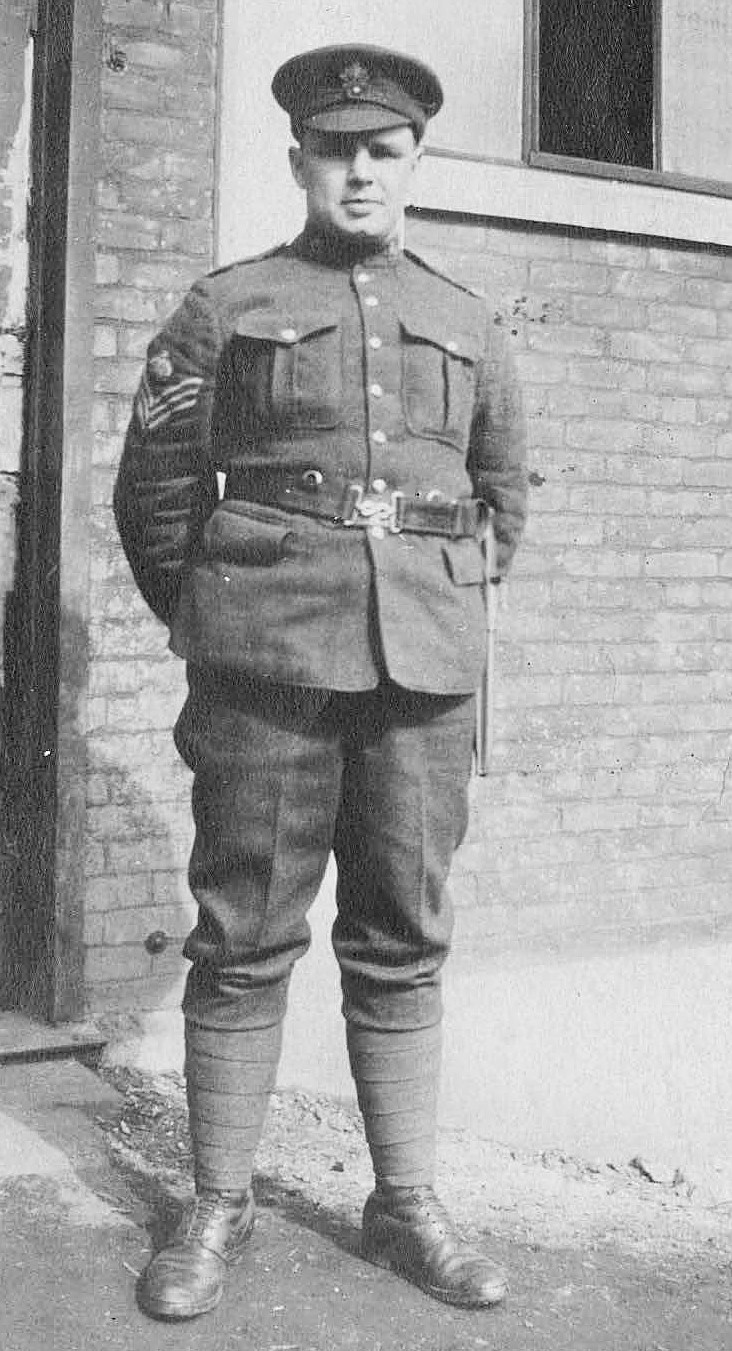 Snooze at home before deployment |
|
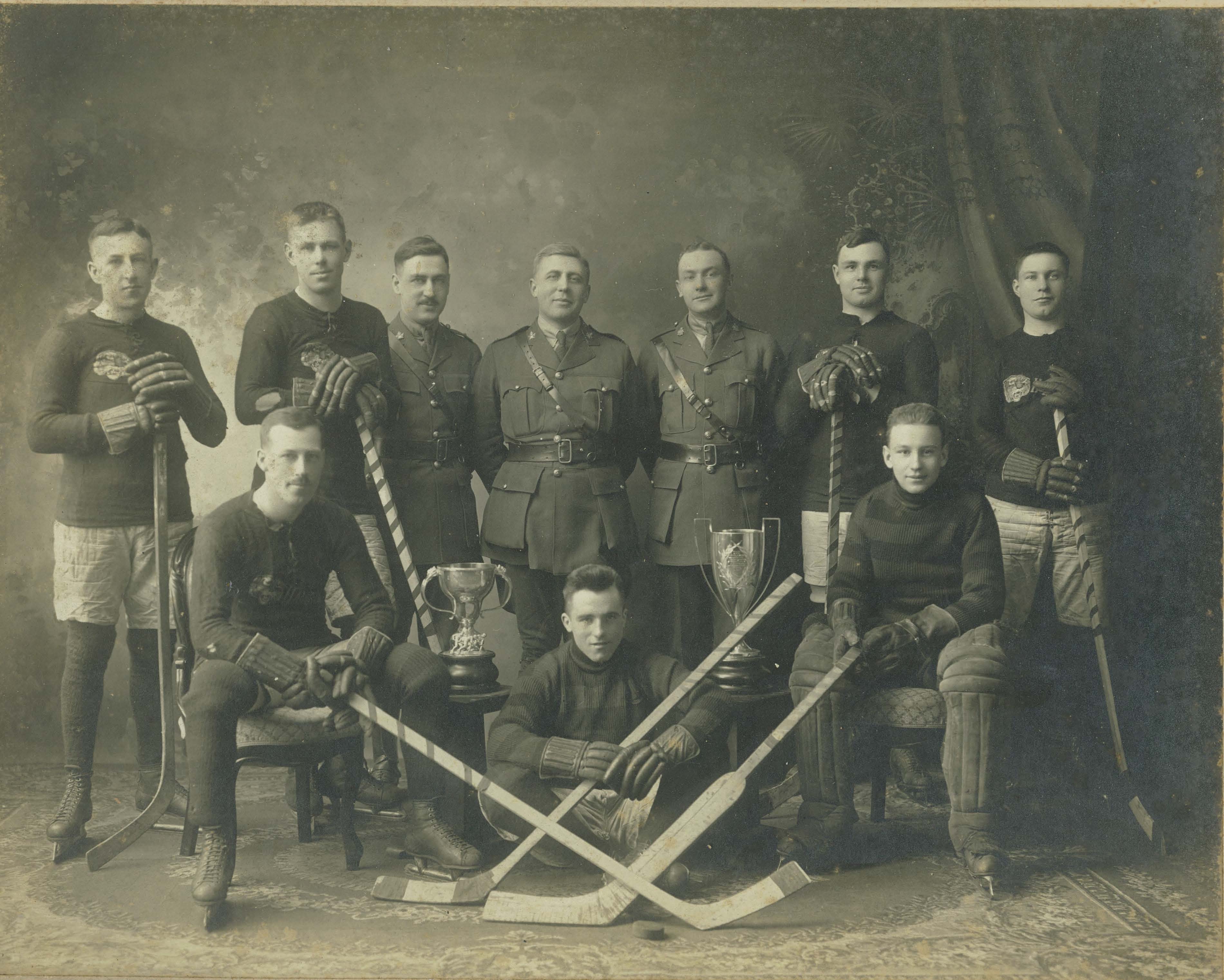 205 Bn Hockey Team before deployment 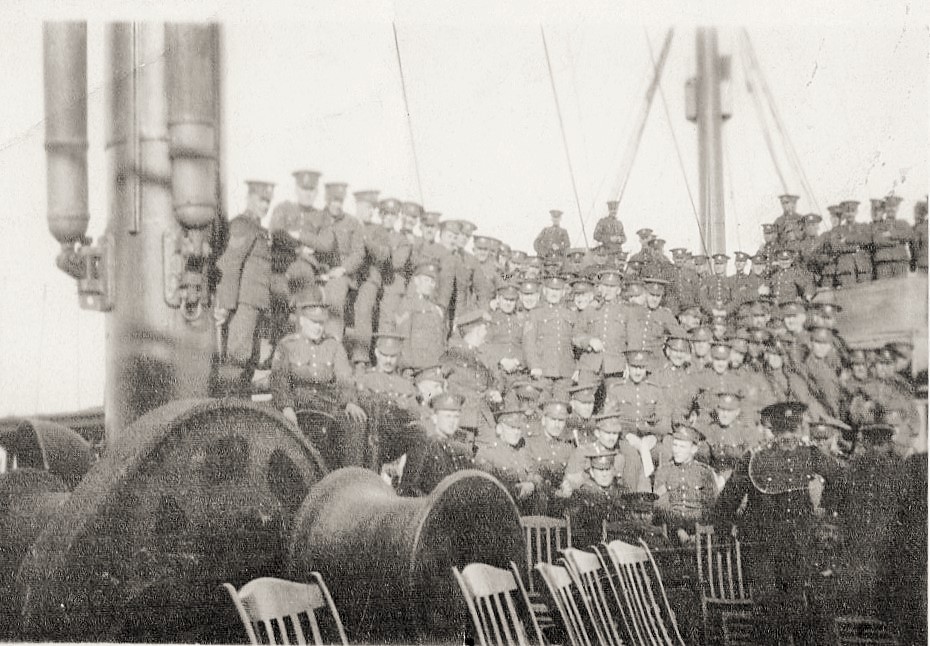 |
|
| On board the Carpathia on the return trip to Canada | |
| A short note home to Snooze's future wife | |
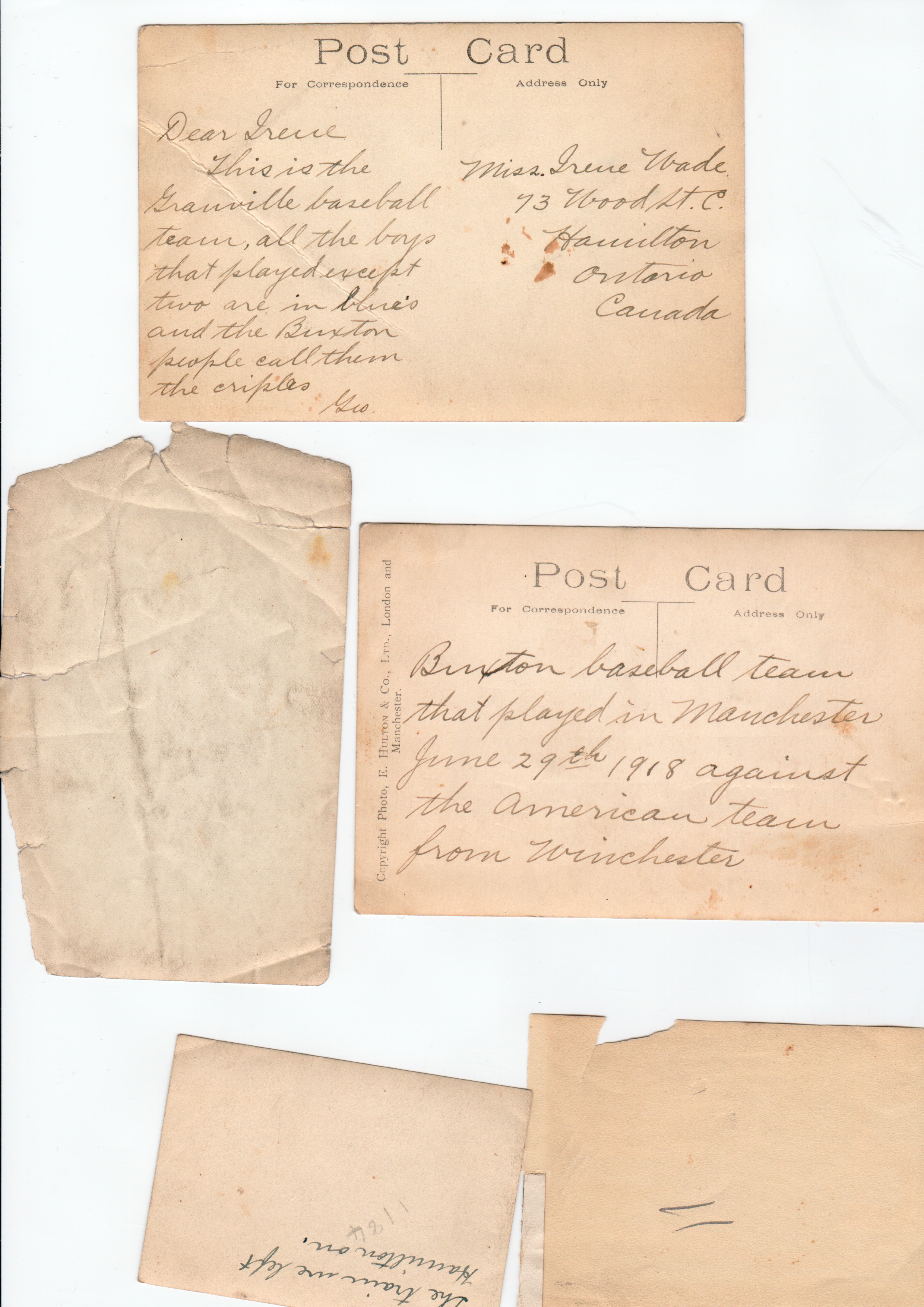 |
21 Dec 2013
Text written and images supplied by Barry Quinn, Grandson of George Ireland.BATTLE HONOURS
"SOMME, 1916", "Ancre Heights", "Ancre, 1916", "ARRAS, 1917, 18", "VIMY, 1917", "Hill 70", ", 1917", "PASSCHENDAELE", "AMIENS", "Scarpe, 1918", "Drocourt-Queant", "HINDENBURG LINE", "CANAL du NORD", "VALENCIENNES", "France and Flanders, 1916-18".
Be sure and visit the 102nd Battalion`s Sister Unit - the 54th Kootenay Battalion
Visit the 21st Battalion from Eastern Ontario